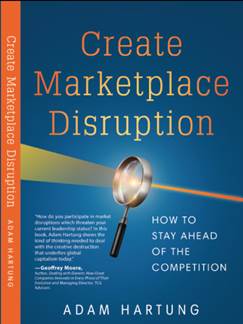The newsletters of Adam Hartung.
Keynote Speaker, Managing Partner, Author on Trends

To Find the Right Trends use Scenario Planning

Perhaps there are no two words more boring than “scenario planning.” Most people would rather analyze past data than try to predict the future. And executives pride themselves on their ability to react quickly and accurately in a crisis. “What, me worry?”
But, stuff happens:
- Patients have a bad reaction to your company’s medicine,
- a catastrophic product failure occurs,
- bad weather prevent customer service agents from manning the phones.
Risk Management- Probability vs. Impact
Other events are more gradual, yet can be even more devastating:
- A restaurant has demographic changes in its neighborhood, losing customers,
- Regulations gradually phase out coal changing demand for it and other fuels,
- Customers read fewer newspapers and watch less TV, making ads ineffective,
- Changing climate alters desire to live in certain climates.
For these events companies have more time to manage a response. Yet most react like the proverbial frog in a pot on the stove, they wait to act until it’s far too late, and discover they are cooked. The pace of business change has accelerated due to the speed of information flow, the fluidity of capital and rapid acquisition of knowledge. Trends we think take a long time create impacts much more quickly. By the time we recognize a trend has impacted our business there is little time to react. Today we have to monitor trends constantly, predict the future and plan our responses long before they impact results.
Good sports coaches plan for the unexpected

Tom Brady checks his play.
Football coaches prepare for deceptive passes, and fake kicks. In baseball, catchers plan for each hitter in the game and those on the bench that may enter later. And coaches plan for what pitcher to bring into the game at different times based upon a wide variety of factors. Emergency room doctors, military generals and even Boy Scouts have plans for contingencies.
How do they know what to do?
Managers today have to analyze trends and predict the speed of change. Plans have to be created not based upon historical practices or the company’s “core” products, services or capability. Rather, plans have to be based upon anticipated future scenarios, built on trend projections. What set of trends is your business monitoring?
Scenario Planning makes spotting Trends easier
Too many planners use the excuse, “There are too many trends to monitor, and how am I to know which are most important?” Quite simply, those companies that answer this question will be best prepared, and most successful. It takes practice to sort through trends, so there is no time better than the present to get started. And if you lack the skill, you should hire a coach to help you figure out which trends will be most impactful, how to project trends and build flexible plans, and how to build a monitoring system so you know when to act.
Steve Jobs was considered a visionary. But in truth he worked with his leadership team to identify the most critical trend that would impact personal computing. They recognized that available bandwidth was the trend that would move everyone from stand-alone computer activities to network-based hardware and software. That insight helped them to create and launch the iPod, iPhone and iPad. And they built a monitoring system to track the implementation of bandwidth, wired and wireless, in order to project how quickly demand would develop for these products. And how quickly they would need to upgrade.
Add me to email list!

“By failing to prepare, you are preparing to fail.”
Benjamin Franklin
Actions you can take
If you are tracking market trends, great! Now, test that process against possible scenarios- this is a good exercise at a company meeting. Give the same trends to two or more groups and have them devise possible scenarios. Or give them the scenarios and compete for the best response.
If you are not yet following trends or want to follow more, use Scenario Planning to help identify the key trends to observe.
Don’t hesitate to ask for help in making your organization more adaptable, and your strategy embedded with options to change based on market shifts.
How we can help
We are your experts at identifying trends, creating scenarios and building external, market monitoring systems. We’ve done this kind of work for over 20 years, and bring a wealth of experience, and tools, to the task. You don’t have to go into scenario planning alone; we can be your coach and mentor to speed learning, and success.
For more on how to include trends in your planning, I’ve created a “how-to” that you can adapt for your team. See my Status Quo Risk Management Playbook.
Give us a call today, or send an email, so we can talk about how you can be a leader, rather than follower, in 2017 and beyond. Or check out the rest of the website to read up on what we do so we can create the right level of engagement for you.
Forbes Posts- Hartung on Leadership, Investing, Trends
- Wells Fargo CEO Stumpf Is Gone: Is This The Beginning Of Wholesale Leadership Change?
- The No. 1 Lesson From Hurricane Matthew And Brexit: Scenario Planning Is Crucial
- Trends: Understanding Aging And Immigration Are Critical To Your Future Success
- It’s Tough To Be an Immigrant, But It Leads To Innovation




